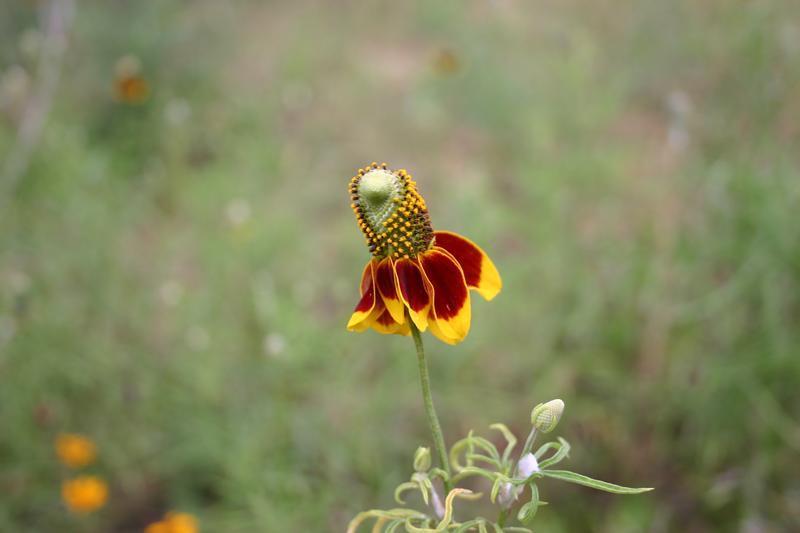I have graduated, climbed another rung on life's long ladder of garden education. I now refer to plants by their botanical names. Out with yarrow, columbine and wormwood, in with Achillea, Aquilegia, and Artemisia.

My conversion to botanical names has been stimulated by gardening books and magazines, which employ them to an alarming degree. For instance, in Sunset's Western Garden Book, maple trees appear under M, but the entry reads: "See Acer."
Fat lot of help that is, I thought, as I leafed back to the correct entry. Black-eyed Susans became Rudbeckia hirta, rock rose appeared as Helianthemum, and Mexican hats are actually Ratibida columnifera.
Catalogs that twice yearly fill my mailbox with temptation have also urged me to learn new ways. Most now print botanical names beside the ones I know. I find my eyes straying to them, attracted by the multitudinous syllables. Some catalogs even understand my fear of saying it wrong and offer pronunciation guides. Sunday morning often finds me curled up with a tea tray and the White Flower Farm catalog, practicing. Lye-sim-ak-ee-a (Lysimachia), le-rye-o-pee (Liriope), ken-tran-thus (Centranthus). Ah, so it's a hard C, is it?
My advancing education has caught my husband by surprise. Just this year, he has begun to name the flowers he trims and deadheads. "The bachelor buttons are doing well," he'll report. Or, "The creeping verbena needs water."
Now, though, when he says snow-in-summer, I say Cerastium. He refers to evening primrose, I to Oenothera. He likes the candytuft, I like the Iberis. Aster, chrysanthemum, delphinium, penstemon, phlox -- plants whose botanical names are also their common ones -- saved us. They are the names that we both know, the names we share.
This infant language proficiency will not make amends to Mr. Potter, my grade school Latin teacher, who spent one long year listening to my stumbling translations of Roman history. But umpteen years after failing to divide Gaul into three parts, I am learning to listen to Latin's poetry and appreciate its precision, a precision perfectly consonant with classifying the plants in my garden.
The common garden sage and lavender that dominate my front beds, for example, are both members of the Labiatae, or mint, family. Like all plant families, its members share general characteristics.
Plant families -- written with the first letter uppercase -- are divided into groups of closer relatives, indicated by the name of the group or genus. Like a plant family, the genus name is uppercased, but it's also italicized. Thus, common sage is Salvia, Latin for sage. Knowing a plant's genus, its botanical root, alters forever one's attitude toward the plants in a garden. It's like finding out that half the people in town are first cousins.
The next descriptor, the species name (lowercase, italics), tells me about a plant's shape, color or leaf form; or some peculiarity; or where it came from. Thus, the full botanical name for my thicket of green garden sage is Salvia officinalis, or common sage. Once tempted, the desire to translate the names of species is intoxicating. Arboreus> means treelike, procumbens> is trailing, argenteus translates as silvery and edilus means edible.
Finally, consider the varieties within each species. Certain varieties, called cultivars, are created and sustained by horticulturists. These are given initial capital letters and single quotation marks. But varieties that are naturally occurring and sustaining, called subspecies, are written like another species name, lowercase and italics.
What about the lavender purplin beside the salvias? Its family is Labiatae; its genus is Lavandula; and its species is angustifolia. White English lavender? Lavandula angustifolia 'Alba'. Spanish lavender? Lavandula stoechas. Spanish lavender with those little pink wings on top? Lavandula stoechas pedunculata. Ha.
It's taken half a lifetime, Mr. Potter, but all I can say is this: Omnia Gallia en tres partes divisa est.